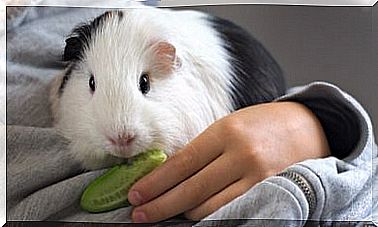Four Common Ailments In Small Dog Breeds

Small dog breeds are very popular in urban areas. In recent decades, various scientific studies have used demographic information on canine pets to assess their main health problems.
Thanks to these efforts we now know, for example, that small dog breeds have a longer life expectancy than large breeds. Despite this greater longevity, small dogs tend to suffer from disease at higher rates than their large counterparts.
For homeowners, understanding what types of problems may arise is important to help them act quickly. Here are some of the most common diseases in small breed dogs.
1. Patellar luxations: a problem in small dog breeds
Normally, the tendons in the knee hold the kneecap fixed in position. Patellar luxation occurs when the patella – or patella – is dislocated from its normal position, the groove of the joint bone.
This dislocation causes pain and functional weakness of the leg. The pathology affects the hind legs and can be easily diagnosed by your veterinarian through a physical exam.
Although it can occur in any breed of dog, small dogs such as the Boston terrier , Pomeranian, Chihuahua, and toy poodle are more prone to the disease. At home it is quite easy to notice the symptoms of this problem, as the dog raises its leg by flexing the knee or takes a small jump.
Therefore, if you ever notice a strange “rabbit jump” maneuver in the animal, consult your veterinarian. There are several different types of procedures to correct this problem, but when it is severe it may require surgery.

2. Tracheal collapse
In a normal state, the trachea is held open by cartilage rings that allow air to flow freely. However, for an unknown reason, progressive weakening of this cartilage can occur in small dog breeds.
Softening of cartilage can be associated with congenital diseases, compression of the throat, or chronic inflammation. Tracheal collapse typically occurs in small dog breeds. Thus, Pomeranians, miniature and toy poodles , Yorkshire terriers , Chihuahuas and pugs are the most affected.
This condition is characterized by a “goose-horn” cough and shortness of breath. It is important to know that this condition worsens when your pet is obese or when he is very excited.
Although there is no known prevention for this condition, the best recommendation is to use a harness instead of a collar and to keep your pet at an appropriate weight. It is also important to avoid exposure to smoke, dust, and strong odors.
Many dogs improve with medical treatment — cough suppressants, anti-inflammatory steroids, and bronchodilators. In severe cases where airway collapse is documented, the veterinarian may recommend surgical placement of a prosthesis or stent .
3. Hypoglycemia in small dog breeds
Glucose in the blood is the main source of energy for all biological functions in the body. When the level of this sugar in the blood drops suddenly, a state of hypoglycemia occurs. This is a common condition in miniature breeds such as the Yorkshire terrier , chihuahua and toy poodle .
The clinical manifestation of hypoglycemia is varied and depends on the underlying cause and the degree of it. The duration and rate of glucose decline and the competence of the hormonal mechanisms that regulate the state of hypoglycemia also play a role.
If you have a small breed dog, you should be vigilant if you notice him weak or if he becomes lethargic. You may find it difficult to maintain a steady gait or have tremors, especially in your face. All of these could be signs of a hypoglycemic attack.
Hypoglycemia can be serious. A sudden drop in blood sugar can even lead a dog into a potentially fatal coma. Therefore, in dogs with a tendency to hypoglycemic states, it is important to avoid prolonged fasting.
4. Imbalance in the maintenance of temperature
It is important to know that disorders in the maintenance of body temperature cause neurological dysfunction and represent a threat to life. In canids, the response to heat stress is primarily through convection and evaporation.
As the guardian of a small dog, the management of these disorders must be carried out decisively and expeditiously to avoid secondary neurological injury.
Also, be very careful when exposing your dog to extreme weather, as this can kill it. For example, you should avoid keeping these dogs in parked cars or other closed areas with poor ventilation.
When exposed to risk, the dog may manifest heat rash, cramps, and heat exhaustion and heat stroke, in order of severity. In addition, some drugs can induce hyperthermia and produce one of several specific clinical syndromes.

Although it may seem daunting to consider the ailments that a small dog might suffer, the truth is that the more you know, the better you can take care of him. Certainly, veterinary practices should also focus on the conditions that most affect these breeds.
In general, proper disclosure of the risk of various diseases in small dog breeds aids in differential diagnosis and appropriate selection of treatments.








